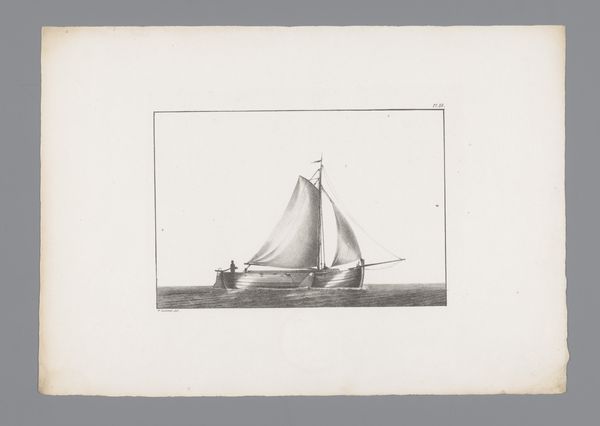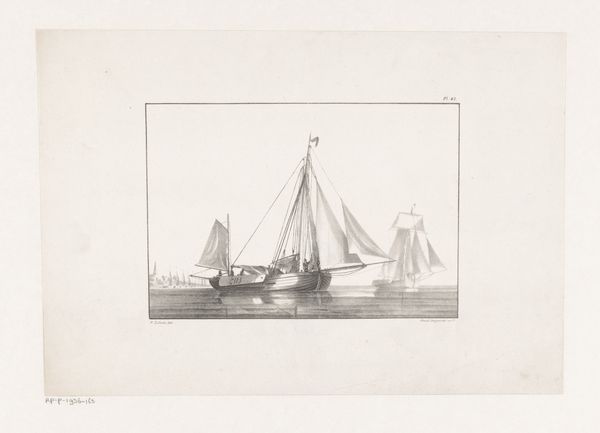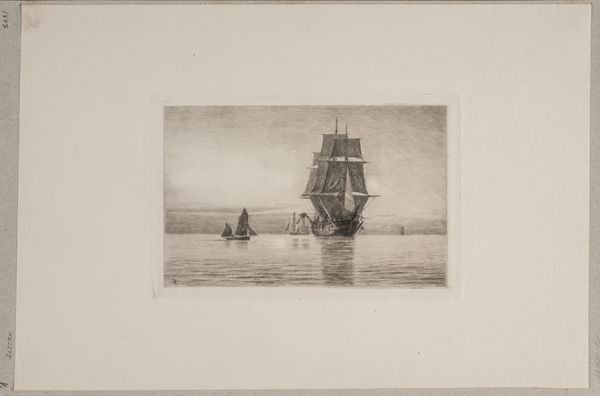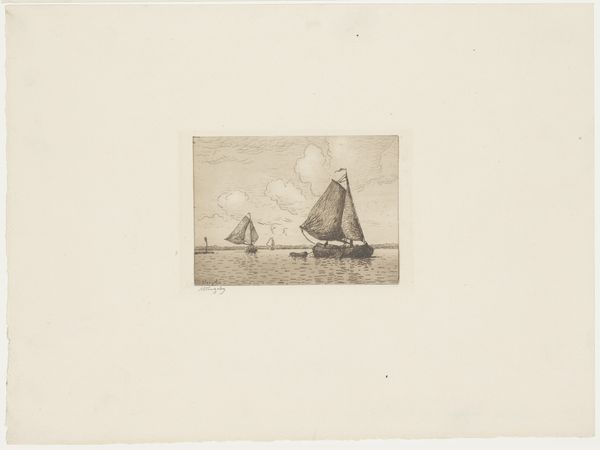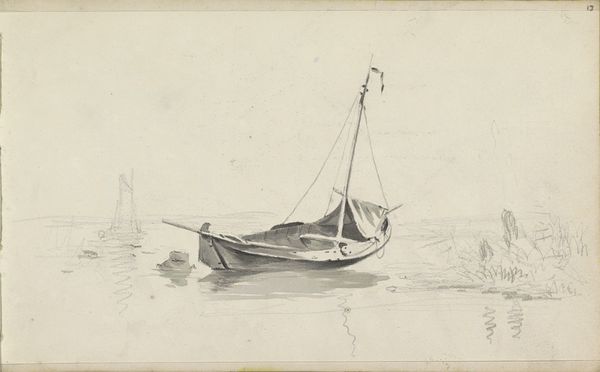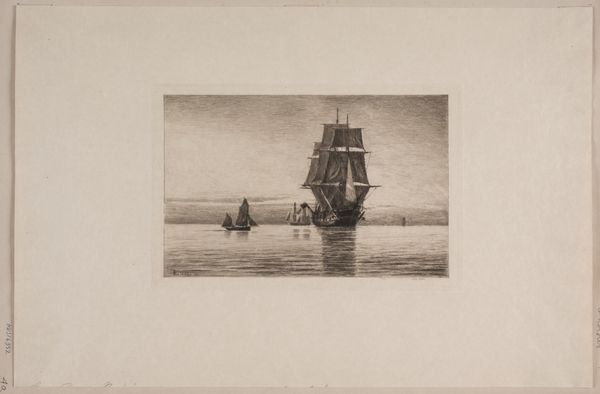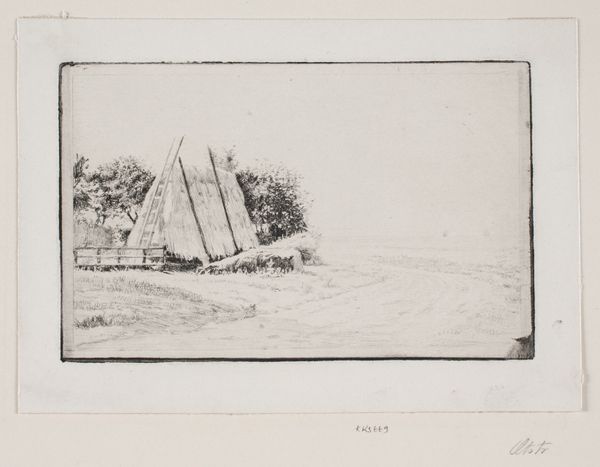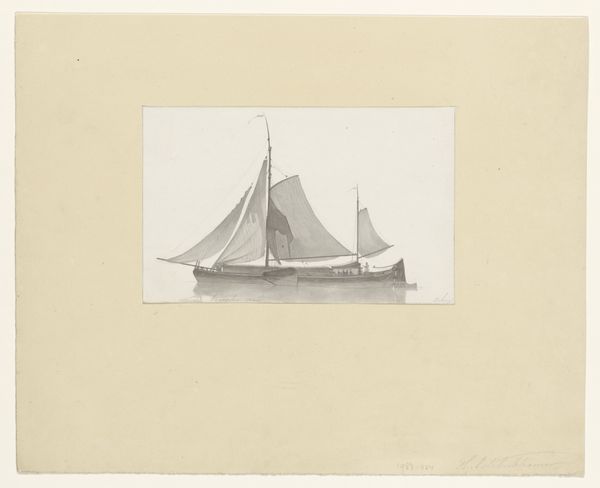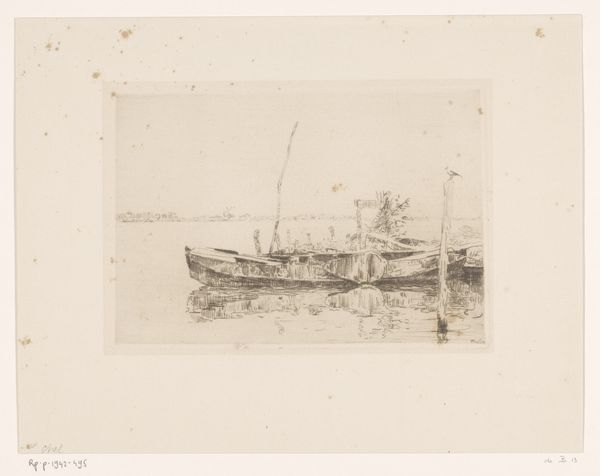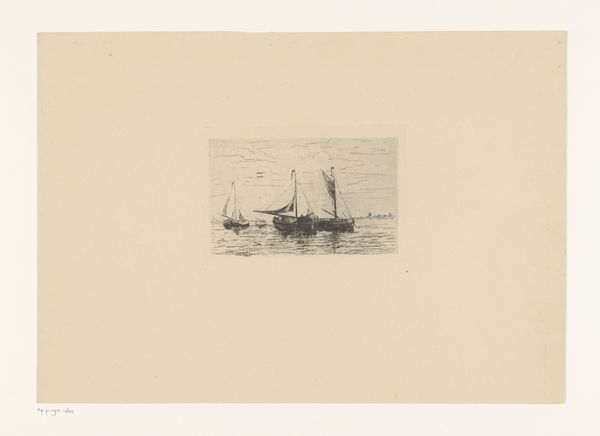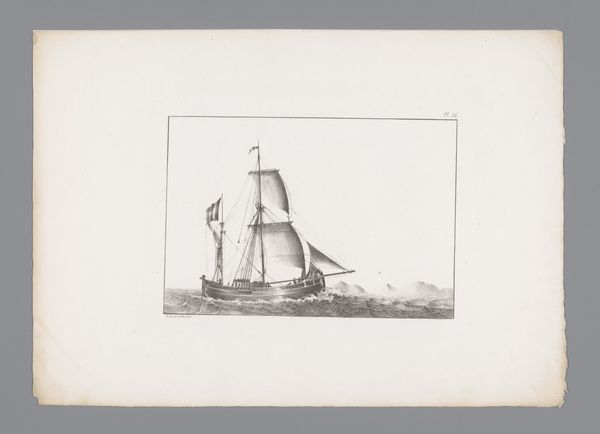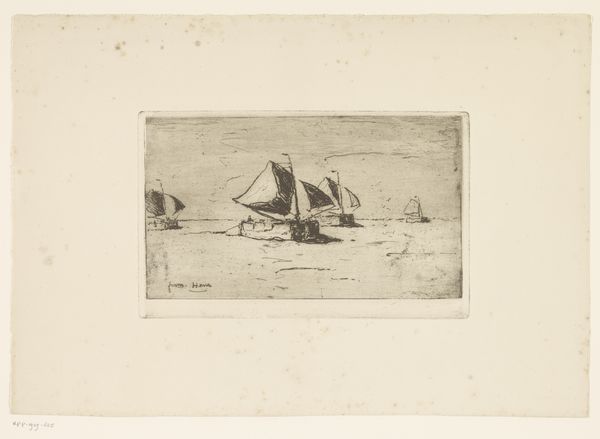
print, etching
# print
#
etching
#
landscape
#
etching
#
realism
Dimensions: 70 mm (height) x 93 mm (width) (plademaal)
Curator: What we're looking at is "En jagt", or "A Hunt", an etching made around 1849 by Vilhelm Kyhn. The museum houses it, printed on paper with etching. Editor: There's something stark and melancholic in its simplicity, isn’t there? The boat, rendered in fine lines, seems very vulnerable against the vast expanse of the sea and sky. Curator: Kyhn was dedicated to depicting the Danish landscape in a way that felt real and connected to the nation. This piece is striking because it lacks idealization. It seems he wants to honestly show labor and nature’s influence on those labors. Editor: Do you mean how it resists the romanticization of maritime activities and focuses instead on presenting the quiet determination of those at sea? Are these hunters or perhaps fisherfolk, striving against environmental odds for sustenance? The role of landscape in their struggle becomes quite pronounced. Curator: Precisely. Think about the broader context. In 1849, Denmark was still shaping its national identity. Presenting the reality of people interacting with the land—or the sea, in this case—reinforced ideas of national character and belonging. It reflected the relationship that working people had with their nation and how that relationship looked to people in other countries. Editor: This interpretation underscores how national identity is often intertwined with socioeconomic realities. Was this piece generally well received at the time? Was it considered revolutionary at all to simply document "reality," the relationship that working people had with their country? Curator: Well, Kyhn was appreciated for capturing what many people were actually doing on the coasts and rural areas. Instead of the ideal or upper class recreation. I wouldn't call this revolutionary though as similar realistic art started in other parts of Europe. Editor: Knowing that Kyhn's "En Jagt" reflected the quiet strength and connection between a community and its environment helps us to move toward more equitable and human narratives in today’s art spaces. Curator: Agreed. Appreciating art like this is all about looking at more equitable presentations. It certainly enriches the experience.
Comments
No comments
Be the first to comment and join the conversation on the ultimate creative platform.
